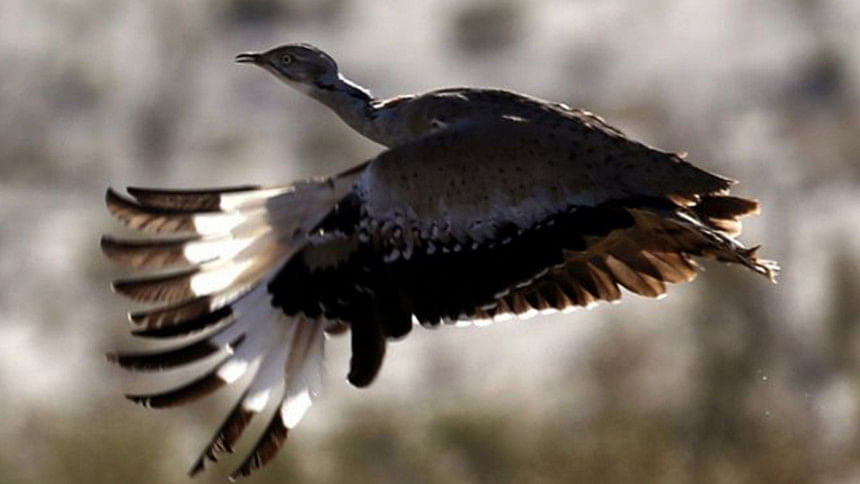Pakistan lifts Houbara bustard hunting ban

Pakistan's supreme court has lifted a ban on the hunting of a rare bird, the Houbara bustard.
The bird is prized by hunters in the Middle East, who consider the bird's meat an aphrodisiac.
The Houbara, which is about the size of a chicken, once flourished on the Arabian peninsula but now faces a high risk of extinction.
The government had asked the court to review the ban, saying it harmed relations with Arab states.
The International Union of the Conservation of Nature (IUCN) estimates the global population of Houbara bustards at between 50,000 and 100,000 and includes it on its red list of threatened species.
Hunting of the birds is banned in Pakistan but the government has routinely issued special permits for Middle Eastern dignitaries, allowing them to hunt under certain conditions.
Last year, the supreme court ordered a total ban on hunting the birds, saying the government should enforce international conventions on conservation.
The government challenged the ban, arguing that wealthy hunters from Gulf states brought investment to under-developed areas in the hunting fields, and that the ban would affect Pakistan's relations with Middle Eastern countries.
The supreme court verdict, which will allow sustainable hunting of the bird, will come as a big relief to many officials and business owners, the BBC's Ilyas Khan reports from Islamabad.
Middle Eastern countries are a major source of sovereign investment in Pakistan and they employ the bulk of Pakistan's overseas manpower, our correspondent adds.
Prior to last year's ban, the foreign ministry had issued permits which allowed foreign dignitaries to hunt in a designated area for up to 10 days and kill up to 100 bustards.
However, the IUCN says hunting parties often "vastly exceed" the quota of Houbara bustard they are allowed to kill. In 2014, it emerged that one Saudi prince had killed 2,100 bustards during a three-week hunting trip, sparking outrage.
Each year, several thousand Houbara bustards traverse a 2,000km (1,200 mile) migratory route from Central Asia to the southern deserts of Pakistan and Iran, and return with the onset of summer.

 For all latest news, follow The Daily Star's Google News channel.
For all latest news, follow The Daily Star's Google News channel. 








Comments